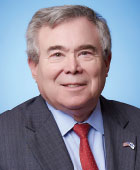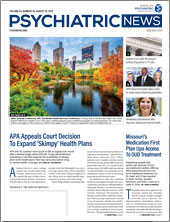The news was shocking. The son of a colleague in our department died by suicide by jumping off an overpass in Los Angeles. There was no warning to his family or history that would suggest why a young man in the prime of his life would take his own life. Los Angeles Police Department officers tried to talk him down, but unsuccessfully. Such unexpected acts are hard for those of us in psychiatry to understand or put into a clinical formulation when information is unavailable. There are also no words to adequately convey the depth of our condolences and sadness to the family despite our experience with these types of acts. We are also at a loss to offer any understanding to our colleagues or the family that might provide them some solace.
Suicide is unlike cancer or other terminal illnesses where family and clinicians have some context to understand why and time to prepare for the possible death of the patient. We have all treated patients with suicidality and know how effective we can be with the overwhelming majority of them. We also recognize the limits to our therapeutic efforts and how the autonomy of our fellow humans sometimes leads them to commit irreversible acts in the throes of mental illness and anguish. I could not help but think that if only he had confided in someone, there might have been a chance to stop him. We know that suicide can be highly impulsive, and when lethal attempts are stopped, many of these individuals will not engage in such behavior in the future.
The United States is one of the only countries in the world with an increasing rate of suicide. Eastern European countries and Asia have higher rates than this country as economic and cultural factors are often more in play in those countries, but their rates of suicides are declining. We are now approaching a prevalence of about 14 deaths per 100,000 population. For the general population, suicide is the 10th leading cause of death. More disturbing, for young adults, it is the second leading cause of death.
So why is this phenomenon occurring in our country? We cannot be certain of the causes for the increase in suicides, but I believe that access to mental health services has become more and more problematic over the past several decades and may well be a contributor. Psychiatrists on the front line of care are required to make very tough decisions about who should be admitted to scarce inpatient beds. Too often suicidal patients have to be discharged before the acute phase of their treatment is completed. Inpatient units in the past strove for “homelike” environments but have been forced to become highly institutional. The push by the Centers for Medicare and Medicaid Services (CMS) and The Joint Commission to be ligature-free has led to the loss of privacy and prisonlike environments. Our therapeutic environments are less than welcoming for someone who wants to seek voluntary treatment for depression. Outpatient care as well is often not accessible in a timely manner, and insurance companies have inadequate numbers of psychiatrists in their networks available to treat suicidal patients.
How can we reverse these trends? APA is actively lobbying the Department of Health and Human Services, CMS, and The Joint Commission to bring balance to the inspection process. We also need to bring about improved reimbursement for hospitals and psychiatrists who care for more seriously ill patients. Passage of parity enforcement legislation in Congress and the states is our highest priority. The National Institutes of Health’s funding for suicide research in 2018 was $72 million out of a total research budget of almost $24 billion. Is this evidence of institutionalized discrimination and stigma regarding mental illness?
APA has almost 39,000 members. Let’s raise our voices and contact our representatives in Congress to redress this imbalance. Maybe we can reverse the plague of suicide. ■

